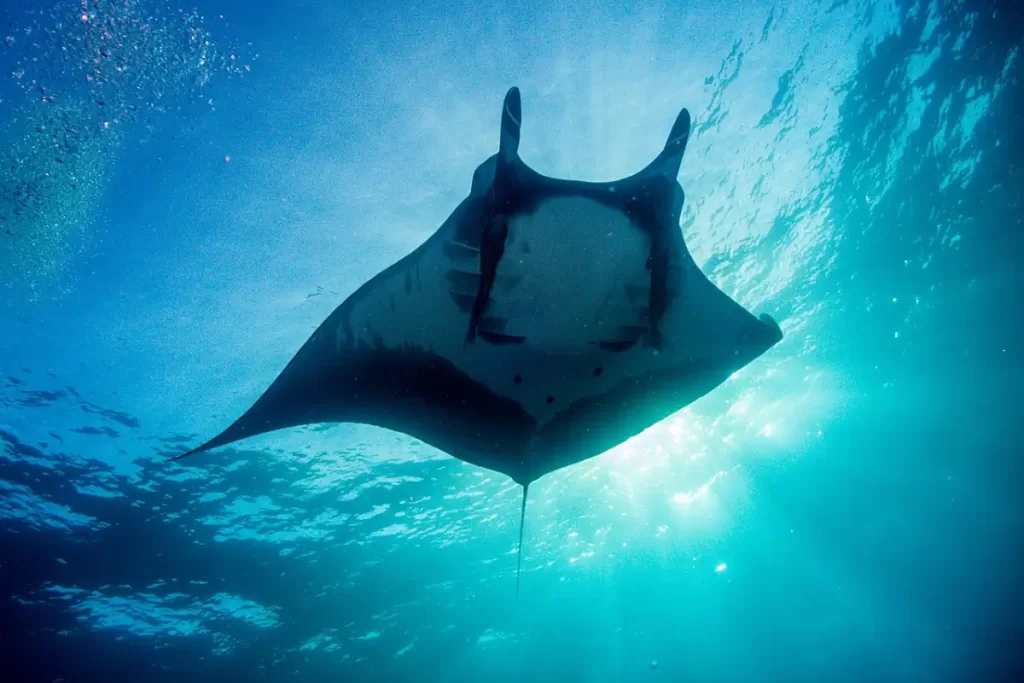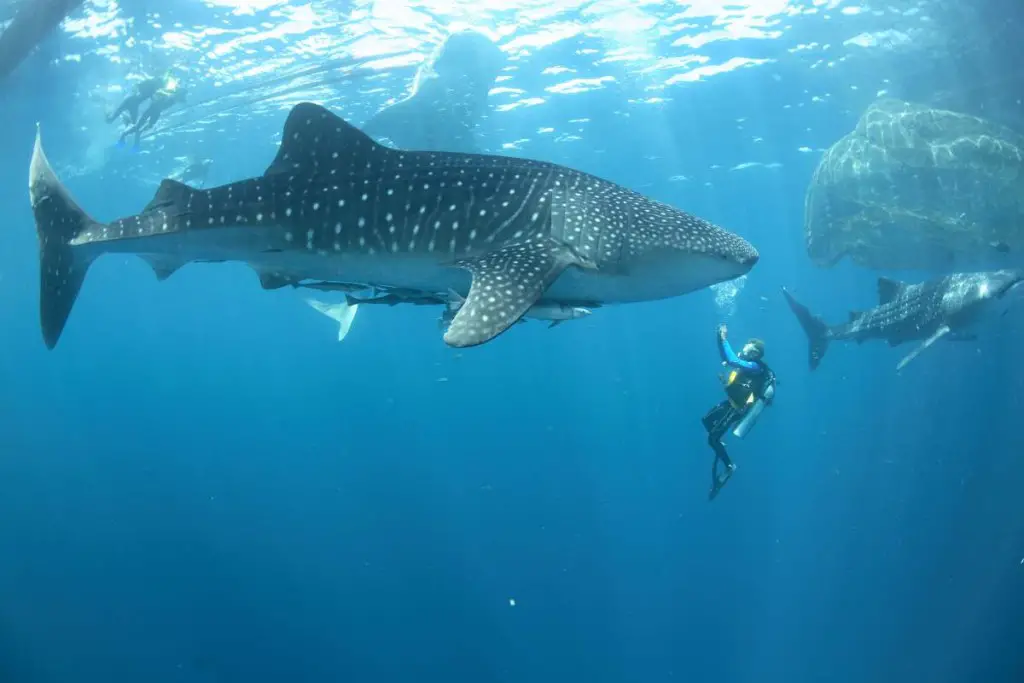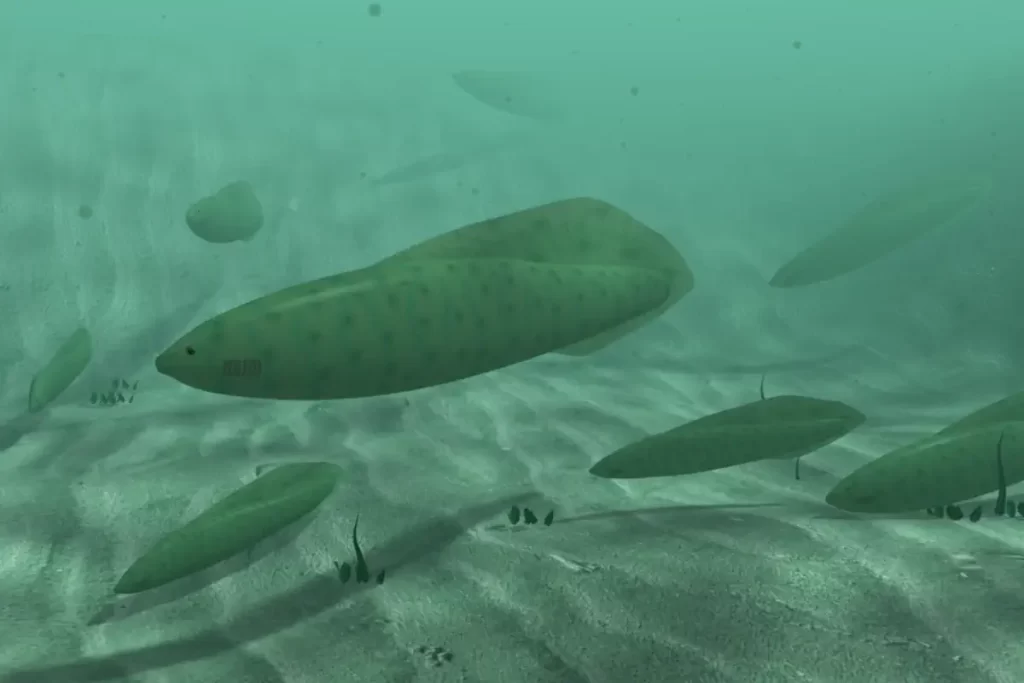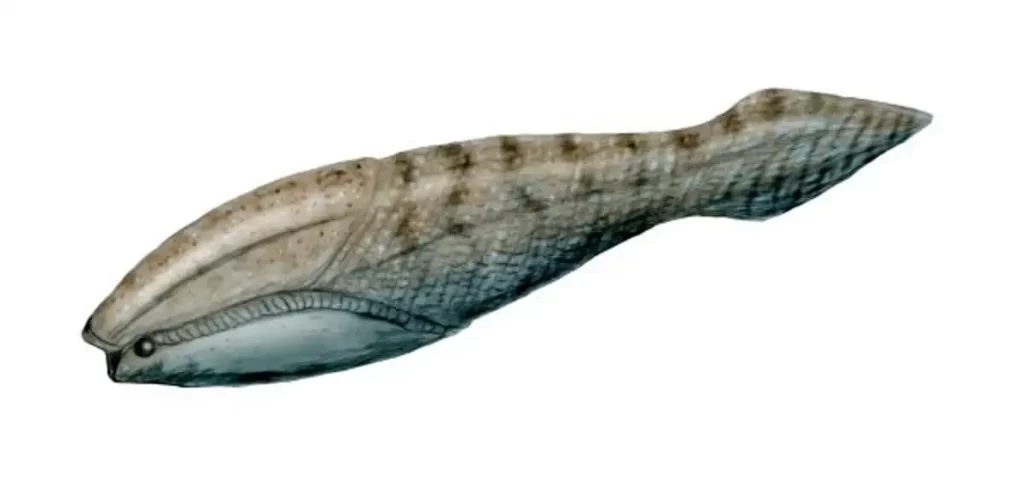Everybody knows most life came from the water, but how did it start? And how did it get where it is now?
In this article, we cover approximately 200 million years of fish evolution, from the first pre-vertebral filter feeders to the first tetrapod walking on land to the development of modern sharks – and everything in between.
There are many different things that might come to mind when you think of a fish. Your first image might be of a solitary goldfish in a small bowl, a colorful reef tank as the centerpiece of a fancy restaurant, or a massive display at an aquarium. You might think of pulling sunfish and trout from a lake or pond, scuba diving in the rainbow of a tropical reef, or the dark oddities that live in the depths of the ocean. Guppies, sharks, angelfish, tuna, stingrays, anglerfish, clownfish, cod, eels, bass – how did all of these things come to be? And why did they all get classified under the same, single umbrella of fish?
What Is a Fish?
Fish occupy so many familiar places in our daily life, popular as pets and as meals, that it’s very easy for someone to visualize a fish or name one. It might be harder, though, to define exactly what a fish is. Well, it’s an animal that lives underwater, you might say. Ok, so are dolphins fish? Are whales? No, they’re mammals, you say; a fish can’t breathe air. What about lobsters, then, or oysters? Are they fish? Are jellyfish fish? Are sharks? Why or why not?

The truth is, historically, even marine biologists have had trouble defining what is and isn’t a fish. In 1851, Herman Melville could confidently assert in the pages of Moby-Dick that whales were fish; this was around the same time biologists were starting to fully understand barnacles, erasing centuries of folk belief that they were the undeveloped, sub-adult forms of geese. Now, of course, neither of these animals are classified as fish.
Currently, by the official scientific definition, a fish must live in the water, must have a skull and gills, and cannot have fingers or toes. That excludes dolphins, whales, and porpoises, which have lungs instead of gills, as well as jellyfish and shellfish, which don’t have any bones. By this definition, sharks are fish; octopi and squid are not. In total, more than 34,000 species meet this definition of fish, more than in any other group of vertebrates. So how did this great wealth of biodiversity develop and spread itself to almost every body of water on the planet?

Related: Top 10 largest fish species
History of Fish
Origins: Cambrian Explosion (530 million years ago)
What we now think of as fish began developing over 500 million years ago, during a period known as the Cambrian explosion. This was a sudden burst of development amongst animal life that occurred between 570 and 530 million years ago. At that time, the Earth was very different than it is today; the environment was much warmer, and there were no polar ice caps. This meant that much of what is dry land today was covered in a shallow sea, and what dry land there was had basically no life on it, animal or plant. The Cambrian explosion changed that, but it also made a huge difference to the life that stayed in the water.
Prior to the Cambrian explosion, all life was aquatic, and most of it was incredibly simple. There were very few life forms made up of more than one cell, or only a few at most. That doesn’t mean they weren’t good survivors, though, as many of these creatures, or their descendants, are still around today. The animal most marine paleontologists pinpoint as the likely ancestor of the first fish is a tunicate, an invertebrate filter feeder similar to modern-day sea squirts. Even though they are invertebrates and don’t have a spine, modern tunicates have a spine-like collection of nerves called a notochord, which is likely what ancient fish or fish ancestors had before they developed into full-fledged spines.
Scientists still don’t know what caused the Cambrian explosion, but all at once, many animals started developing spines and more complex body forms. Interestingly, fish are one of the only groups that evolved during this period whose body forms we would still recognize as “typical” of vertebrates. They had notochords instead of bony spines, but showed the beginning of vertebrae and definitely had heads and tails. Crucially, they first began developing skulls in this period, which is why, even though they weren’t yet vertebrates, Cambrian fossils like the Pikaia are now considered the first fish.


First Vertebrates: 500-430 million years ago
After the massive leap forward in the Cambrian explosion, it may have taken as long as another 100 million years for the first truly vertebral fish to develop. These were mostly heavily armored jawless fish that first appeared in the Ordovician period. Many were bottom-dwelling filter feeders, as their bony armor made them well-protected from predators but heavy and not very nimble.
The Ordovician period in which these fish developed ended with what is believed to be the second-largest extinction event in Earth’s history, in which 60 to 70% of all species then living went extinct. Marine invertebrates, including trilobites and brachiopods, were especially hard hit, as were many of the more complex life forms that had developed alongside fish in the Cambrian explosion. This extinction reduced competition and opened up the marine environment for fish to continue to develop.
It also, by eliminating many of the Cambrian life forms that had developed alongside fish, paved the way for the fish body plan to become the familiar body plan that most vertebrates still use a variation of today.

Jawed Fish: 443-419 million years ago
The development of moveable jaws is often considered a major milestone in the evolution of fish. Gnathostomes, jawed vertebrates, comprise 99% of all modern vertebrates. Fish likely first started developing moveable jaws in the Silurian period, during and after the late Ordovician mass extinction. These jaws were originally developed not for eating, but instead to help push water over the gills and make a gas exchange, i.e. breathing, more efficient.
Notable animals from this period include the Acanthodians or spiny sharks; precursors to our modern sharks, spiny sharks were one of the first jawed vertebrates and an ancestor to most modern cartilaginous fish. Another notable development was the first ray-finned fish, Andreolepis hedei; ray-finned fish have bony structures supporting their fins and make up half of all modern vertebrates. Most modern fish are ray-finned fish.

Age of Fishes: The Devonian Period (419-360 million years ago)
The Devonian Period is known as the Age of Fishes because of the huge variety of fish that appeared and lived during this period. It is also, in a sense, the last age of fishes, because it was in the Middle Devonian, about 390 million years ago, that the first lobed fishes developed lungs and began to walk on land, becoming the first vertebrates to do so.
Other major developments also occurred during the Devonian Period, including the extinction of almost all jawless vertebral fish about 383 million years ago, except for the ancestors of lampreys and hagfish, which still exist today. The two major groups into which we divide fish today are cartilaginous and bony fish. Cartilaginous fish first appeared in this Age of Fishes, about 395 million years ago; bony fish, which had begun to develop during the Silurian Period, massively diversified in the Devonian.
With the development of cartilaginous fish, we see precursors to modern sharks and rays, most notably the Cladoselache, an abundant, fast-moving predator similar (but not identical) to modern sharks. The Devonian Period ended with two mass extinction events, which, over 13 million years, wiped out most lobed fishes, tetrapods, spiny sharks, and reef builders.

Carboniferous Period and beyond
With the Late Devonian extinction, the Age of Fishes was over, and most major milestones of vertebral development among fish had already been reached.
While other major groups of marine animals would come – plesiosaurs and whales, for example – these weren’t actually fish, descending from land-dwellers and re-adapting to a marine lifestyle after developing lungs.
Fish continued to evolve, but it was a process of small changes, rather than major leaps forward. Teleost fish, with the more mobile jaws shared by 96% of modern fish species, first developed around 240 million years ago; the first modern sharks appeared 100 million years ago.
The evolution of fish is, in many ways, the story of the evolution of life as a whole. Most of the major leaps forward in the complexity of life, like the development of spines, occurred in fish, which brought them onto land. But for hundreds of millions of years before those first tentative steps, it was all fish.

- Moon Landings: All-Time List [1966-2025] - February 2, 2025
- What Is Max-Q and Why Is It Important During Rocket Launches? - January 16, 2025
- Top 10 Tallest Rockets Ever Launched [2025 Update] - January 16, 2025
